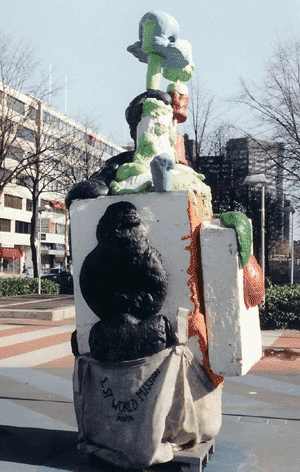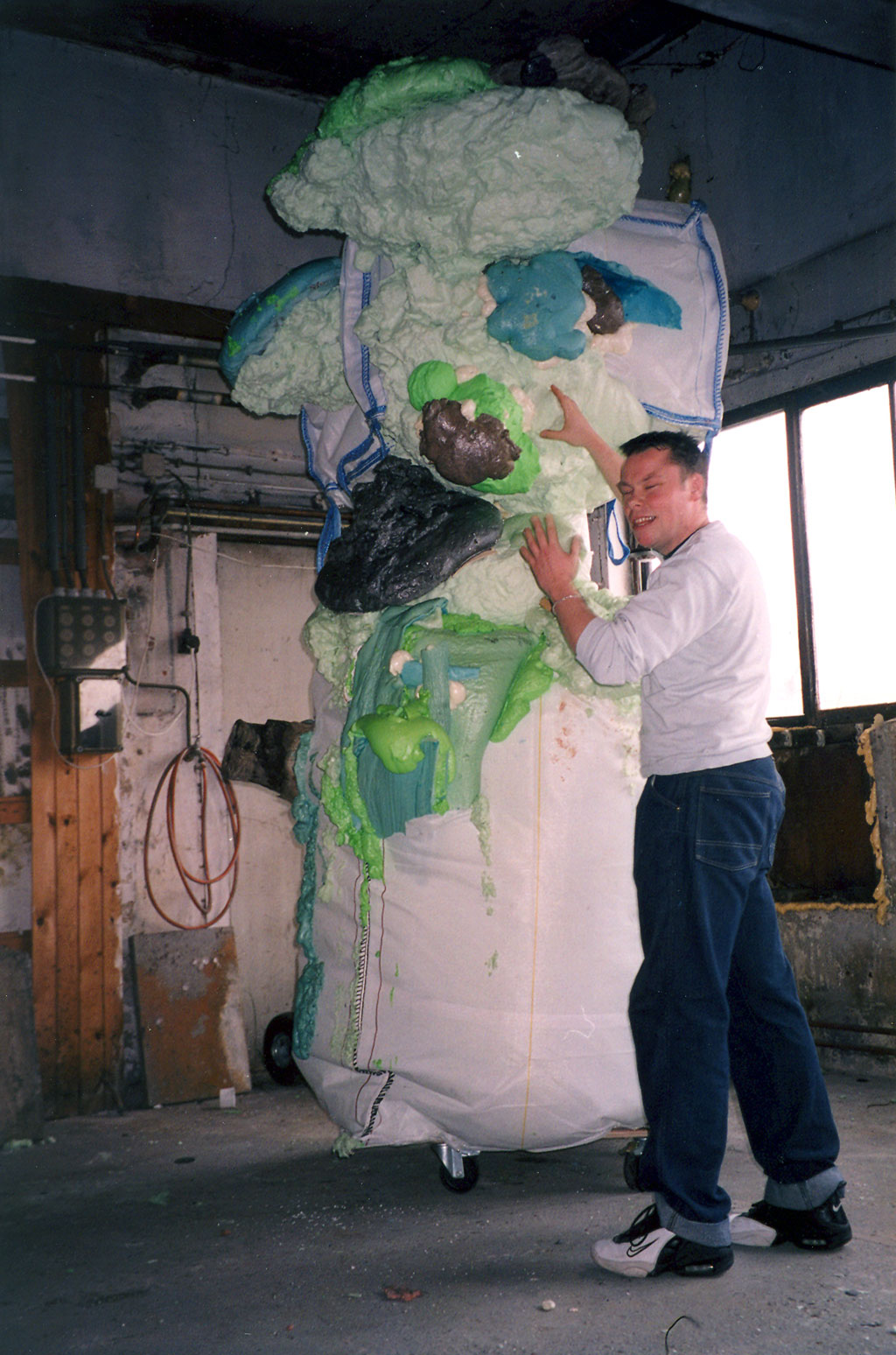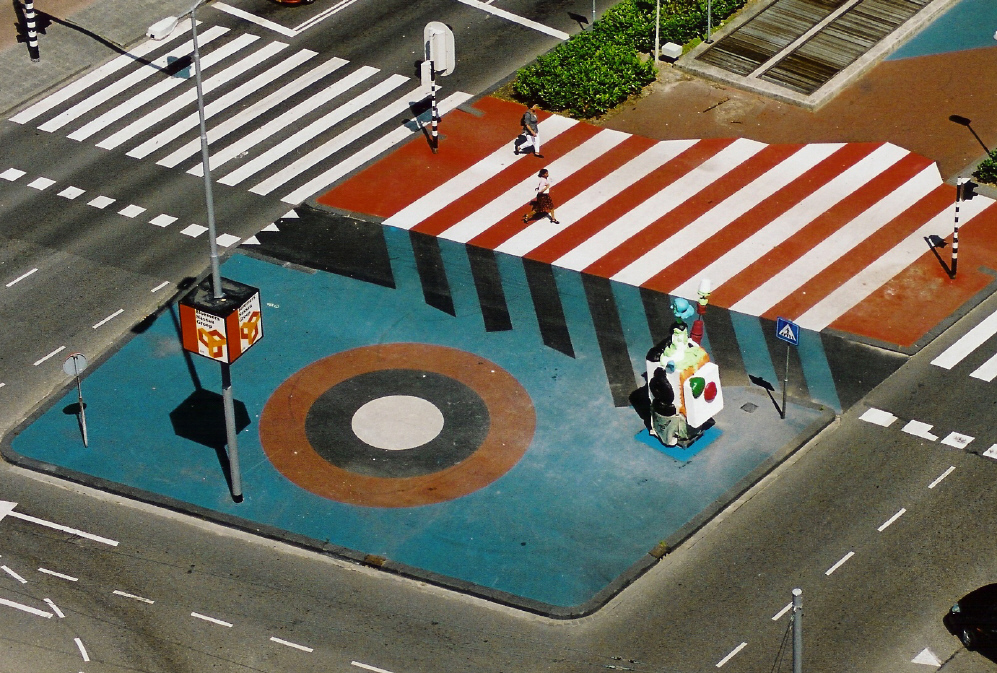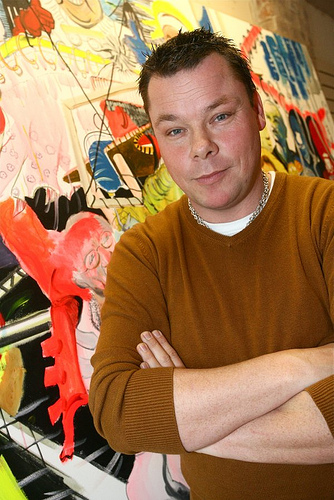The Artwork
Anita is David Bade’s first permanent public sculpture. Until shortly before its execution the artist tested various different ideas. The process – making numerous versions of the design, working with malleable materials such as clay and polyurethane foam and making changes to the sculpture after it was cast – are characteristic of Bade’s associative and impulsive manner of working.
One element recurs in the all the various designs: a rubble sack on a pallet serves as the base for the sculpture. Eventually Bade arrived at a representation of a female figure named Anita, who rises up out of the rubble sack. The colossal, amorphous body is surmounted by a stylised girl’s head on a long, thin neck. Bade made the definitive design at full scale from clay and polyurethane foam, in combination with found objects and materials. The object was then cast in polyester.
Bade designed the object to stand on a pavement, where rubble sacks are normally found, with (as in reality) a pallet as a plinth. This choice is a reference to Rotterdam’s constant urban developments and building projects.
The sculpture is sited on the Eendrachtsplein. According to Bade it functions here as a classical sculpture in a public space and serves as a signpost for the adjacent skateboard park: a place for urban street culture.



